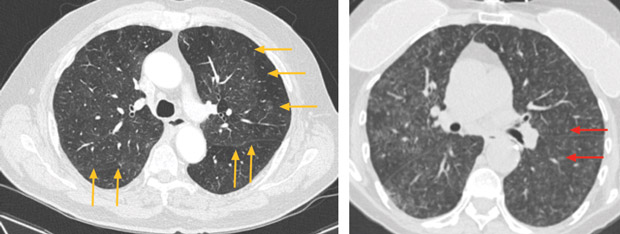Inside CPT and RUC: How a code becomes a code
ACP's input into the determination of relative value units (RVUs) for codes has resulted in several wins for primary care physicians over the past few years.
Have you ever wondered how a code becomes a code, or how codes you use in your practice are valued and maintained? These deliberations and decisions primarily take place at the American Medical Association's (AMA) Current Procedural Terminology (CPT®) and Relative Value Scale Update Committee (RUC) meetings. ACP's Coding and Payment Policy subcommittee is hosting a series of webinars to provide a greater understanding of how relative value units (RVUs) for codes are determined and how ACP is advocating for improved primary care payment. This column offers a brief explanation.
RVS Update Committee
Formed by the AMA, the RUC is made up of 32 volunteer physicians and other health care professionals. ACP has a permanent delegate seat, as well as advisors who guide our engagements at the RUC, and the College currently holds the rotating seat reserved for a primary care representative. The RUC's mission is to provide physician input into the recommendations describing the resources necessary to provide physician services. These recommendations are considered by CMS, which then makes the final decisions about relative values to be assigned to new or revised codes in the CPT book.
CPT Editorial Panel
CPT, the most widely accepted medical nomenclature used by physicians, clinicians, and other qualified health professionals, as well as public and private payers, offers a uniform language for coding medical services and procedures to streamline accuracy and efficiency. The CPT code set is developed by the CPT Editorial Panel, which issues, maintains, and updates codes based on current clinical practice and innovation in medicine.
CPT-RUC Process
The RUC's cycle for developing recommendations is closely coordinated with both the CPT Editorial Panel's schedule for annual code revisions and CMS’ schedule for annual updates to the Medicare Physician Fee Schedule (MPFS). The CPT Editorial Panel meets three times per year to determine code changes for future editions. The updates CMS publishes to the MPFS each year go into effect on Jan. 1 of the following year.
The CPT-RUC process starts with the CPT Editorial Panel's new or revised codes. Any services identified as potentially misvalued are sent to RUC staff by either CMS or RUC. The RUC Advisory Committee reviews them and indicates each society's level of interest in developing a relative value recommendation. Next, the AMA develops and distributes surveys to interested specialty societies to value the work involved in the new, revised, or existing codes.
These surveys are then randomly distributed by the specialty societies to their respective members. The information obtained via the surveys is an integral part of the data collection and valuation process, which is then used to form the basis of the recommendations. Completing and returning the survey are vital ways for ACP members to be sure that their voices are heard in the valuation process.
The specialty societies submit their recommendations to the RUC, composed of the three cost components for each service: physician work, practice expense, and professional liability insurance. Each society's RUC advisor takes the recommendations to the RUC meeting where the RUC decides to adopt the recommendations or refer them for revision. The recommendations are then sent to CMS for review.
The proposed MPFS, published around July of every year for public comment, includes these RUC recommendations and recommendations from CMS. The final MPFS is published around November, with an effective date of Jan. 1. More information on the role of primary care clinicians in improving payment for primary care services is available on the AMA's website.
ACP's wins
ACP's input into the CPT and RUC processes has resulted in several wins for primary care physicians over the past few years:
- Revising E/M documentation guidelines in 2021. The CPT Editorial Panel decided that physicians who bill for Medicare patients are no longer required to use a history or physical exam to determine the appropriate level of E/M coding; rather, physicians should consider medical decision making (MDM) or time guidelines when determining which code to bill. (For more on this win, see “Big Changes Made to E/M Codes in 2021” in the January 2021 ACP Internist.) Additionally, physicians can now bill a new prolonged services code, 99417, that captures prolonged services exceeding the highest level of service (99205 or 99215), each in 15-minute increments.
- Achieving pay parity for both telehealth and audio-only visits until the end of 2023 at a rate equal to in-person visits. CMS is implementing additional telehealth provisions, as well, such as removing geographic restrictions for telehealth services for mental health and substance use disorders.
- Averting the 9.75% reimbursement cuts to Medicare physician payments that were scheduled to take effect in January 2022. These cuts would have affected patient access to care and greatly impacted physician practices still recovering from the financial impacts of the COVID-19 pandemic.
- Allowing critical care services to be paid on the same day as other E/M services and providing separate reimbursement for critical care services in addition to procedures with a global surgical period. These changes allow the work clinicians do to be paid appropriately as a separate service and provide recognition of its value.
- Updating pricing for clinical labor for the first time since 2002, including the supply and equipment prices used for practice expense as part of a market-based pricing transition. There has been a significant disparity between CMS’ clinical wage data and the market average for clinical labor. Updating these rates will help maintain relativity with the recent supply and equipment pricing updates and prevent clinical labor from becoming undervalued over time. Internal medicine will see a 1% increase to clinical labor pricing.
- Adjusting the Quality Payment Program MIPS Value Pathway options for 2023 to include four pathways that are relevant to internal medicine specialists.
Those interested in learning more about how ACP's efforts at CPT and the RUC impact our advocacy for improved payment for primary care can register for our next bi-monthly webinar on May 19.





